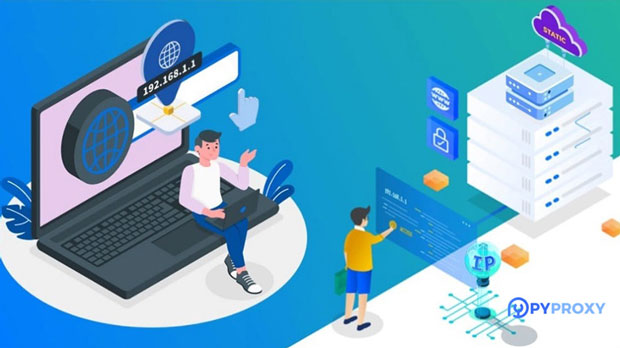The ability to access and stream real-time video content with high quality is a priority for many users, especially with the growing demand for online entertainment and professional streaming. CroxyProxy is a popular online proxy service that allows users to browse the internet securely and privately. But does it support high-quality streaming of real-time video content? In this article, we will analyze whether CroxyProxy is capable of providing smooth, high-quality real-time video streaming experiences. The answer is not as straightforward as it may seem, and it depends on several factors such as server performance, network speed, and compatibility with streaming platforms. Understanding CroxyProxy and Its FunctionalityBefore delving into whether CroxyProxy supports high-quality real-time video streaming, it’s essential to understand what CroxyProxy is and how it works. CroxyProxy is an online proxy service that allows users to access websites without revealing their identity. It routes internet traffic through remote servers, ensuring users’ privacy by masking their IP addresses. This can be helpful in accessing content from geo-restricted regions, maintaining anonymity, and avoiding internet censorship.However, when it comes to video streaming, CroxyProxy may face certain limitations. Streaming video requires fast, uninterrupted internet access, low latency, and high-quality video rendering. These factors depend not just on the proxy service but also on the user’s internet connection and the proxy server’s capacity.Factors Affecting Real-Time Video Streaming with CroxyProxyReal-time video streaming is a resource-intensive task that requires a solid infrastructure. When streaming high-definition (HD) or ultra-high-definition (UHD) content, several factors play a role in the overall experience. Let’s examine these factors in the context of CroxyProxy.1. Server Location and Network SpeedCroxyProxy’s server locations play a crucial role in the video streaming experience. To stream high-quality video in real-time, a fast and reliable network connection is essential. If the user is connected to a CroxyProxy server that is far from their physical location, it could introduce latency and slow down the video buffering time. This can cause video playback issues, including lag, buffering, and decreased video quality.The speed of the proxy server’s connection to the streaming service is another key consideration. If the proxy server is overloaded with multiple users or is not well-equipped to handle large amounts of data, the quality of the video stream could suffer. For instance, when watching HD or UHD content, the server needs to handle a large amount of data without dropping frames or causing stuttering.2. Proxy Server Capacity and Load BalancingCroxyProxy’s ability to handle high-quality video streaming also depends on the server's capacity to manage large amounts of data. If too many users are connected to the same server, the performance can degrade significantly. Video streaming, especially in high resolutions, requires considerable bandwidth, and when multiple users are accessing the same server, it can result in network congestion.Moreover, load balancing is essential for maintaining a smooth user experience. If the proxy service does not distribute traffic efficiently across its servers, certain servers may become overwhelmed, leading to slower speeds, buffering, and even video quality reduction.3. Proxy Configuration and Streaming Platform CompatibilityFor CroxyProxy to provide high-quality video streaming, it must be compatible with the video streaming platforms the user wants to access. Some platforms, such as Netflix, YouTube, or Hulu, employ advanced content delivery methods that may not work well with proxies. Additionally, these platforms may block or throttle connections coming from proxy servers to prevent unauthorized access or maintain content protection standards.Furthermore, CroxyProxy’s configuration can affect the streaming experience. Depending on how the proxy is set up, it might limit the bandwidth available for video streaming. Proxy services typically do not prioritize streaming traffic, which can lead to lower quality streams, especially when the network is congested.4. Latency and Buffering IssuesLatency is the delay that occurs between a user’s action and the response from the server. In real-time video streaming, latency is critical. Even a few seconds of delay can result in buffering and stuttering, significantly affecting the user’s viewing experience. CroxyProxy, like any other proxy service, introduces some level of latency due to the nature of rerouting traffic through remote servers. This can affect the smoothness of video playback, especially when streaming live events or video calls.Buffering, the process of preloading video content to ensure smooth playback, can also be affected by the proxy service. While CroxyProxy may provide some level of buffering, it cannot guarantee seamless streaming if the internet connection or server performance is subpar.5. Video Resolution and CompressionVideo resolution refers to the clarity of the video being streamed. Higher resolutions such as 4K require more bandwidth and data processing power. CroxyProxy’s performance in streaming high-resolution videos depends on its server infrastructure. If the proxy server is not optimized for large file transfers, it may struggle to stream high-definition videos smoothly.Additionally, some streaming services apply video compression to reduce data usage and improve load times. While this helps with reducing buffering, it can also lead to a loss of visual quality. CroxyProxy’s effect on video resolution may vary depending on the compression settings of the streaming platform and the proxy server’s capacity.Is CroxyProxy Ideal for High-Quality Video Streaming?While CroxyProxy offers a range of advantages such as enhanced privacy and access to geo-restricted content, it is not specifically designed for optimal video streaming. The performance of video streaming depends on various factors, such as network speed, server location, proxy configuration, and streaming platform compatibility.For users seeking uninterrupted, high-quality real-time video streaming, it may be more practical to rely on dedicated streaming services or use a VPN designed for media consumption. CroxyProxy can be a suitable option for casual browsing or watching videos in lower quality, but for the best streaming experience, users should be aware of the potential limitations.Conclusion: Weighing the Pros and ConsIn conclusion, while CroxyProxy can allow users to access video content, it is not the ideal solution for high-quality real-time video streaming. The key limitations are related to network speed, server capacity, latency, and compatibility with streaming platforms. For users who prioritize high-quality streaming experiences, using a dedicated VPN service or a direct connection to the internet may provide a better alternative. However, for occasional video streaming or casual browsing, CroxyProxy can still serve its purpose, provided the user is mindful of its limitations.
Jun 23, 2025
















































